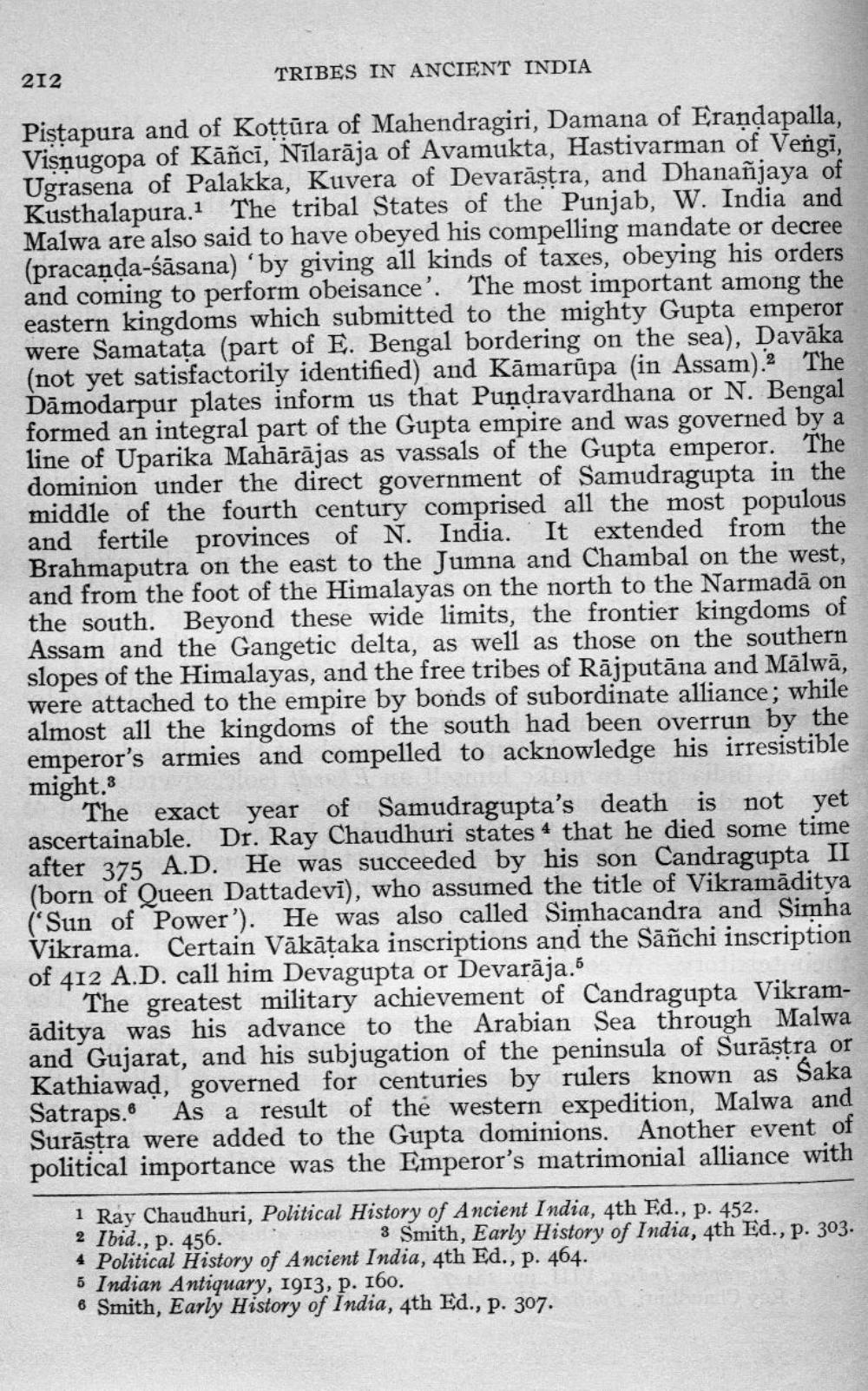________________
212
TRIBES IN ANCIENT INDIA
Pistapura and of Kottūra of Mahendragiri, Damana of Erandapalla, Visnugopa of Kāñci, Nīlarāja of Avamukta, Hastivarman of Vergi, Ugrasena of Palakka, Kuvera of Devarāştra, and Dhanañjaya of Kusthalapura.1 The tribal States of the Punjab, W. India and Malwa are also said to have obeyed his compelling mandate or decree (pracanda-śāsana) 'by giving all kinds of taxes, obeying his orders and coming to perform obeisance'. The most important among the eastern kingdoms which submitted to the mighty Gupta emperor were Samataţa (part of E. Bengal bordering on the sea), Davāka (not yet satisfactorily identified) and Kāmarūpa (in Assam). The Dāmodarpur plates inform us that Pundravardhana or N. Bengal formed an integral part of the Gupta empire and was governed by a line of Uparika Mahārājas as vassals of the Gupta emperor. The dominion under the direct government of Samudragupta in the middle of the fourth century comprised all the most populous and fertile provinces of N. India. It extended from the Brahmaputra on the east to the Jumna and Chambal on the west, and from the foot of the Himalayas on the north to the Narmadā on the south. Beyond these wide limits, the frontier kingdoms of Assam and the Gangetic delta, as well as those on the southern slopes of the Himalayas, and the free tribes of Rājputāna and Mälwā, were attached to the empire by bonds of subordinate alliance; while almost all the kingdoms of the south had been overrun by the emperor's armies and compelled to acknowledge his irresistible might.3
The exact year of Samudragupta's death is not yet ascertainable. Dr. Ray Chaudhuri states 4 that he died some time after 375 A.D. He was succeeded by his son Candragupta II (born of Queen Dattadevī), who assumed the title of Vikramāditya ("Sun of Power'). He was also called Simhacandra and Simha Vikrama. Certain Vākātaka inscriptions and the Sāñchi inscription of 412 A.D. call him Devagupta or Devarāja.
The greatest military achievement of Candragupta Vikramāditya was his advance to the Arabian Sea through Malwa and Gujarat, and his subjugation of the peninsula of Surāstra or Kathiawad, governed for centuries by rulers known as Saka Satraps. As a result of the western expedition, Malwa and Surāstra were added to the Gupta dominions. Another event of political importance was the Emperor's matrimonial alliance with
1 Ray Chaudhuri, Political History of Ancient India, 4th Ed., p. 452. 2 Ibid., p. 456.
3 Smith, Early History of India, 4th Ed., p. 303. 4 Political History of Ancient India, 4th Ed., p. 464. 5 Indian Antiquary, 1913, p. 160. & Smith, Early History of India, 4th Ed., p. 307.




